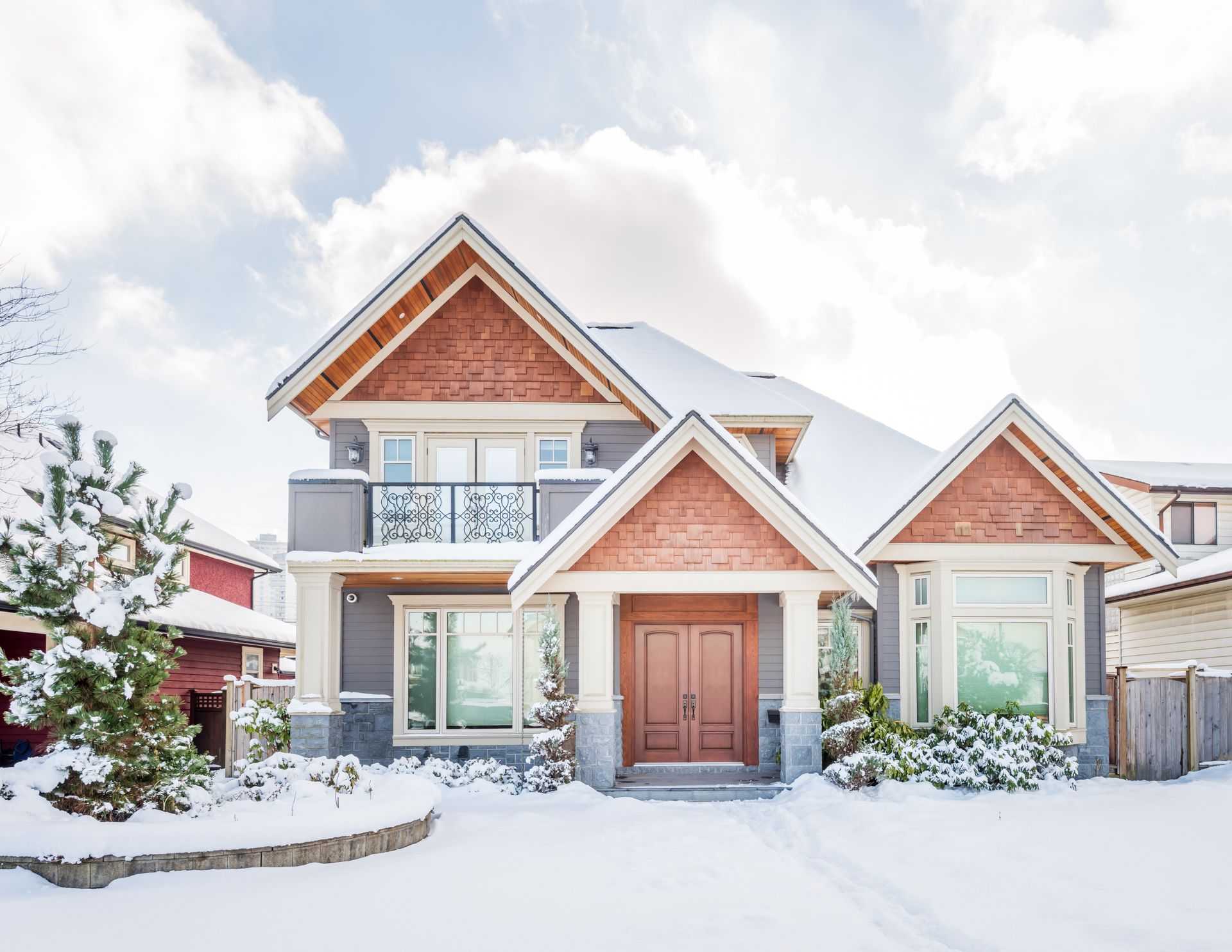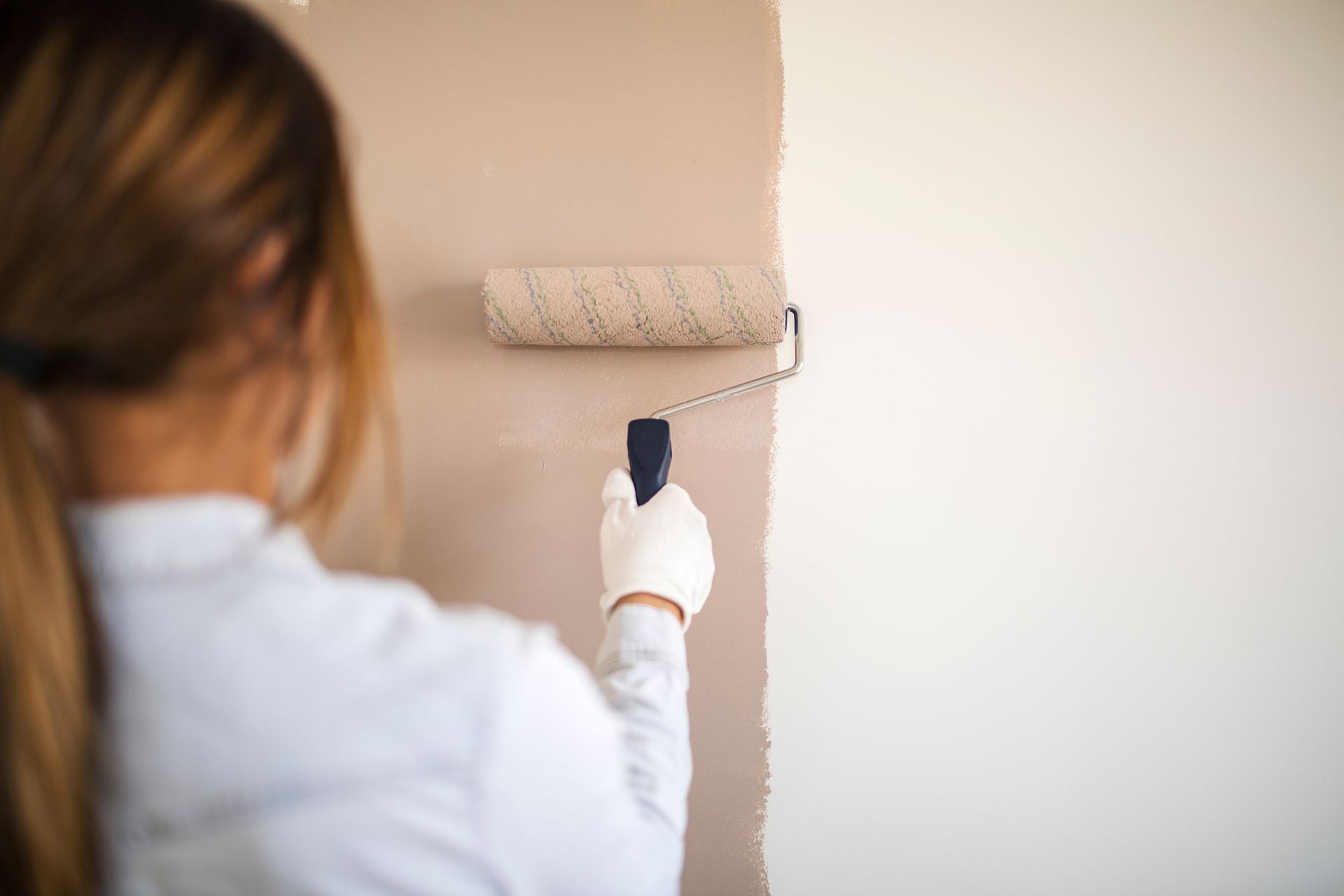New England winters are no joke, and neither is the toll they can take on your home’s exterior. With freezing temperatures, heavy snow, and ice storms, the harsh winter weather can wreak havoc on your home’s paint, causing it to peel, crack, or fade prematurely. For homeowners in Western Massachusetts, where winters can be especially unforgiving, protecting your home’s paint isn’t just about keeping it looking good—it’s about safeguarding the underlying structure from costly damage.
A quality paint job is your home’s first line of defense against the elements, but even the best paint can suffer without proper care. Snow and ice can trap moisture against painted surfaces, while fluctuating temperatures can cause expansion and contraction that weakens the paint’s bond. Without the right precautions, what starts as minor wear and tear can lead to significant problems come spring.
The good news? There are simple, proactive steps you can take to ensure your home’s paint weathers the winter in top condition. In this article, we’ll share practical tips to protect your home’s exterior paint from the challenges of a New England winter and keep your home looking its best all year long.
Common Winter Paint Damage Issues

New England winters bring a unique set of challenges for homeowners, especially when it comes to protecting exterior paint. Understanding the most common types of winter-related damage can help you take preventative measures and avoid costly repairs down the line.
- Peeling and Cracking
Freezing temperatures cause wood and other surfaces to expand and contract, which can weaken the bond between the paint and the surface. Over time, this leads to peeling and cracking, exposing the underlying material to moisture and further damage.
- Fading and Discoloration
While it may seem surprising, UV rays reflected off snow can cause exterior paint to fade even in winter. Lighter-colored paints and finishes are particularly susceptible to discoloration during these months.
- Water Damage
Ice dams and heavy snow accumulation can trap moisture against your home’s exterior. This moisture can seep beneath the paint, causing it to bubble or flake. If left untreated, it may also lead to wood rot or structural issues.
- Mold and Mildew Growth
Excess moisture can also create the perfect environment for mold and mildew growth on painted surfaces. Not only is this unsightly, but it can also cause health issues for you and your family.
Tips for Protecting Your Home’s Paint
Now that we’ve identified potential winter paint damage issues let’s explore some practical steps to safeguard your home’s exterior from these problems.
- Inspect Your Exterior Before Winter Hits: The best time to prepare your home for winter is before the colder weather arrives. Take a walk around your property and inspect the condition of your exterior paint. Look for any signs of peeling, cracking, or discoloration and address these issues before they worsen.
- Clean the Exterior Before Winter: Dirt, grime, and other debris can weaken the paint’s bond with surfaces over time. Clean your home’s exterior thoroughly before winter to remove any buildup that may cause damage or discoloration in the coming months.
- Apply a Fresh Coat of Paint: If your home’s exterior paint is already showing signs of wear and tear, consider applying a fresh coat before winter sets in. This will provide an extra layer of protection against the harsh elements and help extend the life of your paint job.
- Choose Quality Paint Products: Investing in high-quality paints and finishes can make a significant difference in how well your home’s exterior holds up during the winter. Look for paints specifically designed for cold weather and choose products with high UV resistance.
- Clear Snow and Ice Regularly: Removing snow and ice from your home’s exterior promptly can prevent moisture buildup and protect against water damage. Use a plastic shovel or broom to gently remove snow without damaging the paint.
- Inspect Gutters and Downspouts: Clogged gutters and downspouts can lead to ice dams, which can cause significant damage to your home’s exterior. Clean these areas before winter hits, and make sure they are clear throughout the season.
- Keep an Eye Out for Mold and Mildew: Regularly check your home’s exterior for any signs of mold or mildew growth. If you spot any, clean it promptly with a mixture of bleach and water to prevent it from spreading.
- Consider Professional Help: If you’re unsure about how to protect your home’s paint during the winter months, consider hiring a professional painting service. They will have the knowledge and experience to provide expert recommendations and ensure your home’s exterior stays in top condition all winter long.
Embrace Winter Wonder: Preserve the Beauty of Your Home's Exterior
Don’t let harsh New England winters damage the exterior of your home and cost you thousands in repairs. By following these simple tips, you can protect your home’s paint from common winter damage issues and ensure it stays looking beautiful all season long. With a little extra care, you can embrace the winter wonderland outside while keeping your home safe and well-maintained. So bundle up, grab a warm cup of cocoa, and let your home’s paint stand strong against the elements. Happy winter!
Ready to protect your home's exterior this winter season? Look no further than Pioneer Painters, your trusted painting experts in Western MA! Our professional team is equipped with the knowledge and experience to provide top-notch painting services that will keep your home looking beautiful and protected from the harsh winter elements. Contact us today for a consultation and let us help you preserve the beauty of your home all year round.
Recent Blogs





